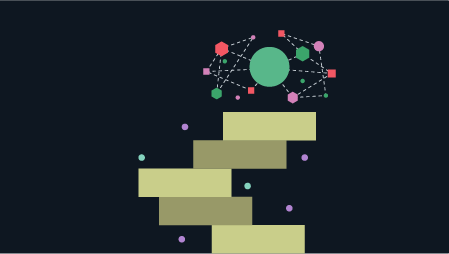Internet of Things (IoT) gadgets are everywhere. Cars, buildings, roadways, airplanes, home appliances, and other items have tens of billions of sensors, processors, and internet-connected gadgets. IoT devices detect motion, regulate temperature, share and collect data, measure weather, and provide location information, power logistics, and medical research. They also enable self-driving vehicles, to name just a few of their functions. IoT devices are also playing a role in combating hunger by empowering farmers and food producers with tech-enabled tools. With IoT-powered agriculture, farmers can feed more people more cost-effectively while using less water, fertilizers, and pesticides.
So, what does IoT-powered agriculture look like? IoT technology can be applied to agriculture in a variety of ways, but the ultimate goal is to increase crop health, nutritional value, productivity, and yield.
IoT-enabled agriculture is helping to address poverty and malnutrition in developing nations, while IoT is enhancing farming techniques in developed countries to produce more higher-quality food at lower prices and with less environmental impact. This article will examine several applications of IoT-enabled agriculture that give a glimpse of where we’re headed.
Connected flour mills bring better nutrition to 100 million Africans
Malnutrition is a huge problem around the world, taking a massive toll on human health. An estimated two billion people worldwide are affected by micronutrient malnutrition, meaning they don’t get the proper vitamins and minerals from their food supply. This causes high rates of disease, especially in children, such as birth defects, intellectual disabilities, development issues, and blindness. And, nowhere is malnutrition as prevalent as in Africa, where poor soils, harsh weather, fast-growing populations, and poverty combine to create the perfect storm.
Sanku-Project Healthy Children (Sanku-PHC) is a non-profit that is working to equip small flour mills across Africa with special machines called “dosifiers” that add vital nutrients to flour during the milling process. By 2030, flour mills equipped with Sanku-PHC dosifiers will provide over 100 million people with lifesaving enriched flour.
Many of these flour mills are in remote, rural areas, making it difficult to check in regularly on the dosifiers to ensure they’re working correctly. That’s where IoT comes in. The dosifiers are equipped with sensors and SIM cards to collect data in real-time and relay it to Sanku-PHC’s web and mobile management platform, allowing staff to keep tabs on hundreds of dosifiers across Africa via a smartphone app.
The IoT devices fitted with SIM cards continuously provide information about equipment status, power supply, and maintenance requirements. The devices also monitor miller compliance and fortification accuracy. All this data is sent to the Sanku-PHC platform every five minutes, whereas previously, Sanku-PHC relied on in-person visits and paper-based monitoring. The real-time data feed is also linked to Sanku-PHC’s inventory management system, enabling automated flour and nutrient-mix deliveries.
The result? Far higher efficiency, compliance, and effectiveness, which results in more families eating enriched foods and fewer children suffering from malnutrition. Sanku-PHC has been able to streamline staffing, sending fewer people out to visit mills, which cuts down on costs and vehicle emissions and frees up staff to work on more strategic initiatives.
IoT-enabled tractors help farmers earn more to grow more
While farmers in developed economies have access to many types of machinery, their counterparts in emerging markets can often only dream of using a tractor to till, plant, and cultivate their fields. Tractors are too expensive for many small farmers, especially in places such as Africa, India, and Southeast Asia.
In these geographies, many farmers continue to use traditional manual-labour farming methods, which often results in late planting and under-cultivation of their land. This, in turn, leads to smaller crop yields, which negatively impact communities through food scarcity and higher prices, and it also negatively impacts farmers through lower income.
Hello, Tractor is a startup that helps small farmers in thirteen countries in Africa as well as in Bangladesh, Pakistan, Guatemala, and Jamaica get access to tractors at an affordable price. Meanwhile, tractor owners make money by providing services with their equipment when not in use. The entire system works via a mobile app pairing up tractor supply with tractor demand —sort of like an Uber of tractors. But, unlike Uber, the tractor owners don’t usually drive their tractors; they hire operators, so they must be equipped with SIM-cards and IoT sensors that can communicate data about their availability, location, fuel usage, and maintenance status.
For farmers, the IoT sensors make it easy to find available tractors nearby and to check them out via a mobile app. For tractor owners, the IoT sensors provide peace of mind because they allow owners to remotely track the location and usage metrics in order to ensure their equipment is not stolen or used inappropriately. Banks that have financed tractor purchases can also log into the Hello Tractor app to check on a tractor’s location in case of missed payments, while equipment dealers benefit by tracking operational hours to recommend scheduled maintenance.
Hello Tractor is a unique example of how IoT can empower not just small farmers, but the support system that surrounds them. The result is high crop productivity at a lower cost, which translates into more abundant and affordable food for everyone.
There are so many other ways that the IoT is changing the agriculture industry. The IoT enabled a family farm in Turkey to diversify into more than 180 products while reducing water, fertilizer, and pesticide use. It ushered in the era of farming robots, powered devices that alert ranchers when cows are about to go into calf, and it allows farmers to produce crops indoors on vertical racks. Especially when paired with cellular connectivity, IoT devices are a low-cost way for farmers to get the data and information they need to adapt to changing climate patterns, improve crop yields for a growing population, and decrease their dependence on fertilizer and pesticides.





